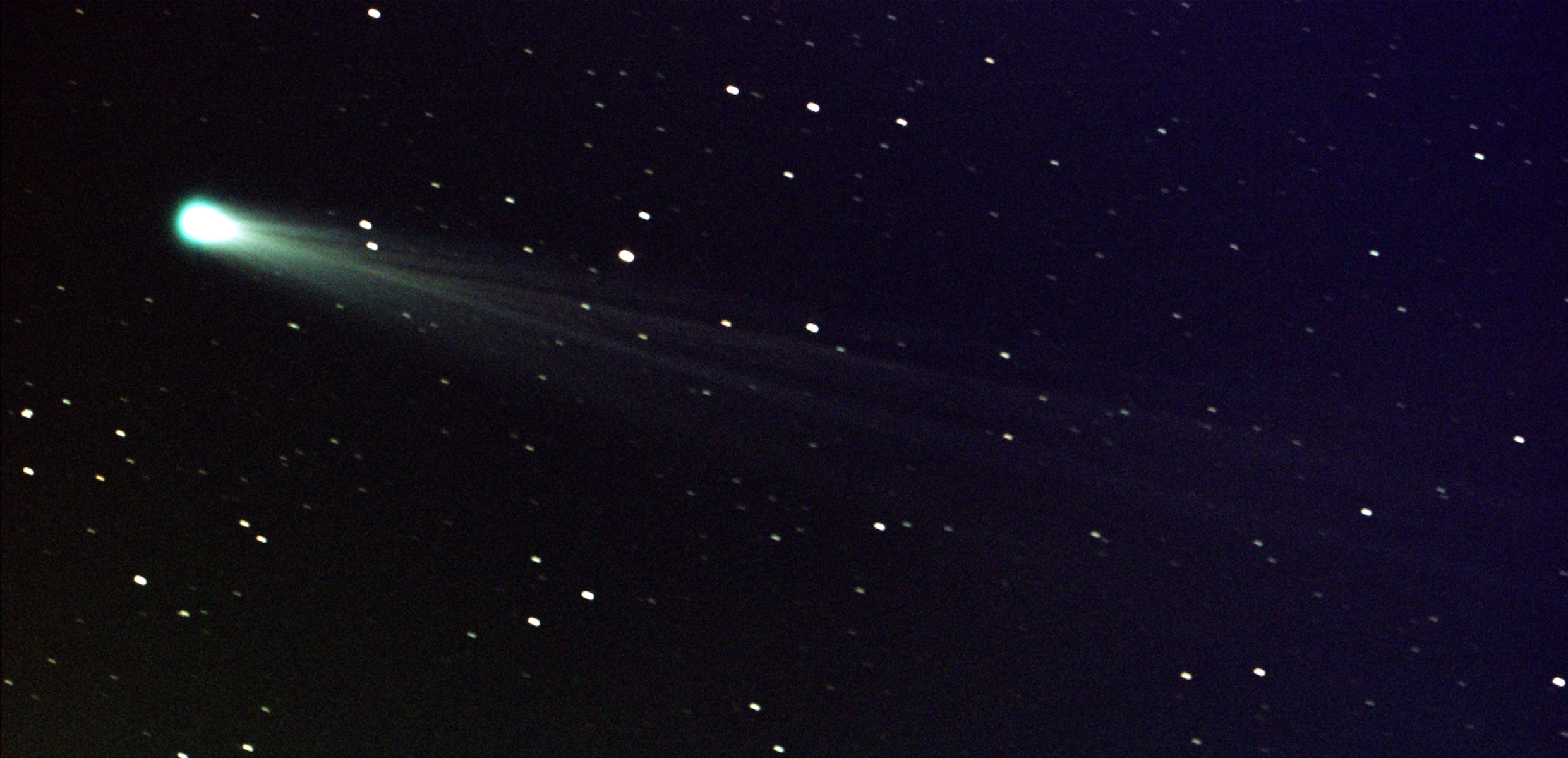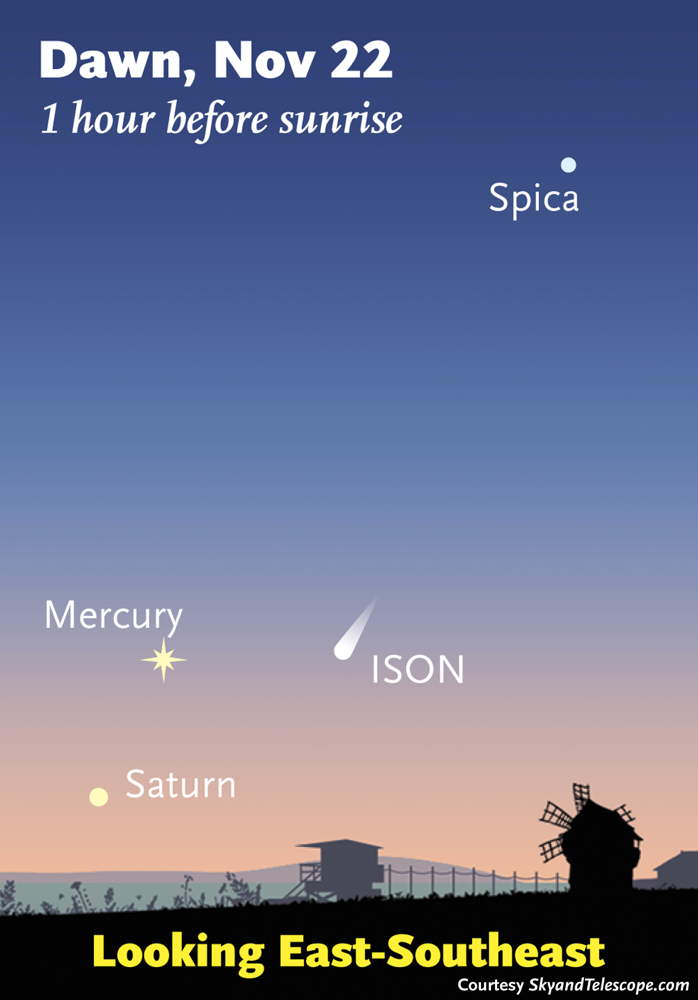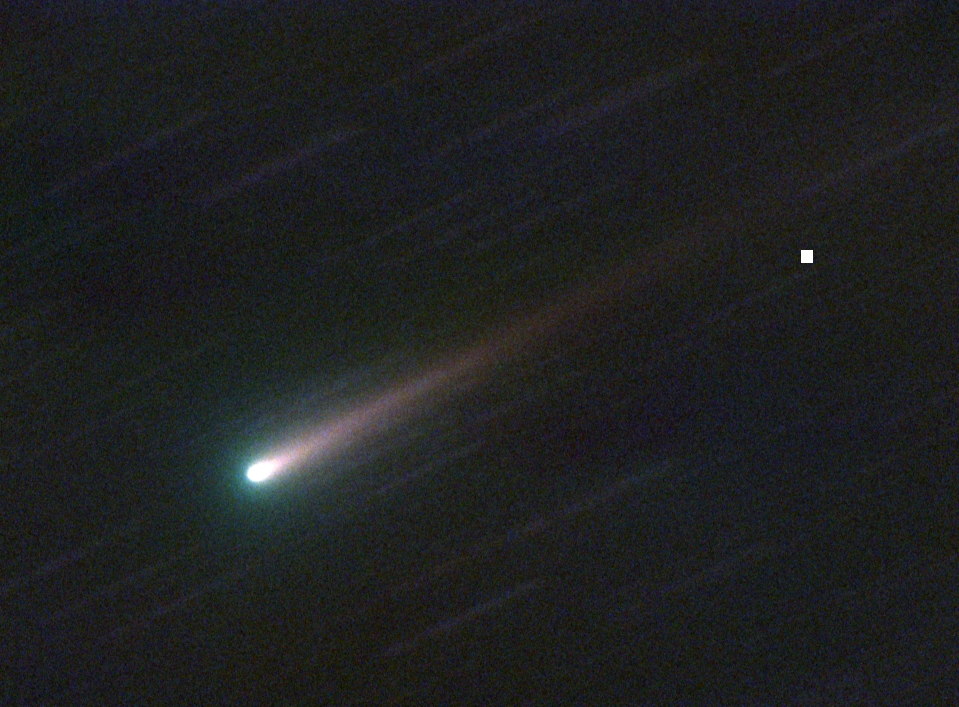NASA Sees Comet ISON 9 Days Before Close Sun Encounter

NASA astronomers have captured an amazing new photo of the brightening Comet ISON, an image that reveals the comet's intricate tail as it heads for a rendezvous with the sun next week.
The new photo of Comet ISON was taken Tuesday (Nov. 19) by scientists at NASA's Marshall Space Flight Center in Huntsville, Ala., nine days ahead of the comet's Thanksgiving Day close encounter with the sun on Nov. 28.
"Comet ISON shows off its tail …" NASA's image description begins. The comet photo was taken early Tuesday at 6:10 a.m. EST (1110 GMT) by Aaron Kingery at the Marshall center. He used a 14-inch telescope with a three-minute exposure time, according to the image description. [Comet ISON's Stargazing Show : 8 Essential Facts]

"The comet is just nine days away from its close encounter with the sun; hopefully it will survive to put on a nice show during the first week of December," NASA officials wrote of the image. "The star images are trailed because the telescope is tracking on the comet, which is now exhibiting obvious motion with respect to the background stars over a period of minutes."
Comet ISON was first discovered by Russian amateur astronomers Vitali Nevski and Artyom Novichonok in September 2012 with a remotely operated telescope in the International Scientific Optical Network (ISON). The comet is officially designated as C/2012 S1 (ISON).
On Nov. 28, Comet ISON will make its closest approach to the sun and come within 730,000 miles (1.2 million kilometers) of the solar surface. The comet has drawn much attention from the public, stargazers and professional astronomers because of hopes that it might flare up into a so-called "comet of the century" after its sun flyby.

The major uncertainty with Comet ISON is whether it will survive its encounter with the sun, or if it will break apart and be destroyed. Scientists aren't yet sure which path the comet's evolution will take.
Get the Space.com Newsletter
Breaking space news, the latest updates on rocket launches, skywatching events and more!
Editor's note: If you snap an amazing picture of Comet ISON or any other night sky view that you'd like to share for a possible story or image gallery, send photos, comments and your name and location to managing editor Tariq Malik at spacephotos@space.com.
You can follow the latest Comet ISON news, photos and video on SPACE.com.
Email Tariq Malik at tmalik@space.com or follow him @tariqjmalik and Google+. Follow us @Spacedotcom, Facebook and Google+. Original article on SPACE.com.
Join our Space Forums to keep talking space on the latest missions, night sky and more! And if you have a news tip, correction or comment, let us know at: community@space.com.

Tariq is the Editor-in-Chief of Space.com and joined the team in 2001, first as an intern and staff writer, and later as an editor. He covers human spaceflight, exploration and space science, as well as skywatching and entertainment. He became Space.com's Managing Editor in 2009 and Editor-in-Chief in 2019. Before joining Space.com, Tariq was a staff reporter for The Los Angeles Times covering education and city beats in La Habra, Fullerton and Huntington Beach. In October 2022, Tariq received the Harry Kolcum Award for excellence in space reporting from the National Space Club Florida Committee. He is also an Eagle Scout (yes, he has the Space Exploration merit badge) and went to Space Camp four times as a kid and a fifth time as an adult. He has journalism degrees from the University of Southern California and New York University. You can find Tariq at Space.com and as the co-host to the This Week In Space podcast with space historian Rod Pyle on the TWiT network. To see his latest project, you can follow Tariq on Twitter @tariqjmalik.









